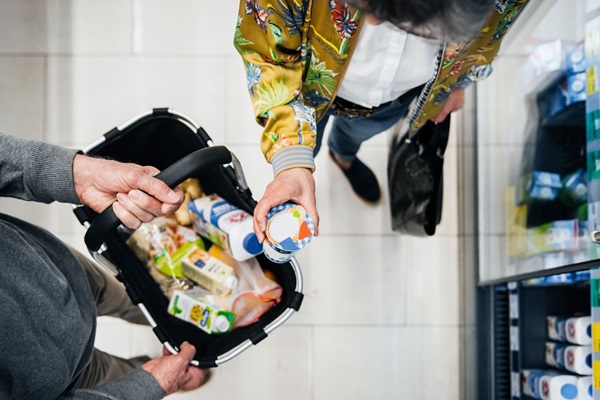
Faced with the turmoil brought on by war, inflation, the pandemic, climate change and technological advancements it is easy to focus on the transitory, rather than the fundamental. To navigate today’s world, brands need to strip it back to the basics. We listed three key takeaways brands need to consider retaining and growing their shoppers in today’s inflationary environment:
Inflation is not one-size-fits-all. Everyone will face inflation to a degree, but the impact and experience differs based on the personal financial pressure a shopper feels. This varies according to a combination of their financial security, the impact of inflation on the products that they buy, and the scope that their existing purchasing habits give them to find savings.
- Understanding your core shoppers’ financial situation, exposure to inflation and scope to trade down is key to understanding the extent of their budget pressure, and therefore how to predict and mitigate against the coping strategies they will adopt.
Offer a compromise or be the compromise. When shoppers are faced with rising prices, they have the option to employ several different coping strategies from trading down to cheaper products, shopping around more, buying more on promotion, or simply buying less.
- Large value packs may offer mathematical value but make no practical sense if they blow a shopper's budget for that trip. By ensuring wider ranging and distribution of smaller pack sizes at smaller price points, brands can still create the opportunity for shoppers to buy even when budgets are stretched to the limit.
Think beyond price. Focusing on value alone is not enough to deliver growth. Brands grow by creating more reasons and more opportunities to buy. Those that are solely focused on value are not doing either.
- For brands, this means ensuring availability and relevance in as many moments of consumption as possible, such as by creating new formats or flavours to cater for a broader range of occasions. Take Ferrero as an example, the primary source of the brand’s growth between 2007-2009 was directly targeting a new occasion, positioning Nutella as a breakfast essential. Despite a price increase of 15%, the brand saw a 11% increase in penetration and a 31% increase in value sales. And now they are leveraging the on-the-go occasion with B-ready.

So, one thing that does not change in a cost-of-living crisis is how brands grow. It is about building difference with the brand purpose and expected experience in mind. Brands still need to attract new shoppers and they still need to do so by pulling at least one of the brand growth levers: whether it is reaching new targets, new occasions, or new needs, entering new categories, or securing new presence, a strategy that overlooks these is destined to fail. However good the value proposition may be.
Source: Kantar white paper “The Inflationary Divide”
Be brave to drive brand growth through innovation

Innovation will continue to be the foundation on which strong brands are built, and, if history teaches us anything, disruptive times create the catalyst for a disruptive strategy for innovation. Brands grow by creating more reasons and more opportunities to buy, making innovation indispensable in a brand’s growth strategy.
Change brings new opportunities for innovation. But an innovation may not be completely new, just better, more convenient, or more affordable than existing products.
Kantar innovation design principles are centred around removing the frictions and driving the fuels to create innovations that represent a frictionless choice. And this means the innovation needs to be convenient, meaningful, and rewarding.
- Convenience: remove the frictions (cost, hassle, availability…)
- Meaningful: motivate to fuel the change (deliver benefits, align beliefs & values, be desirable, build positive associations…)
- Rewarding: deliver on the promise and offer a memorable experience
Good examples of brands that keep these principles at the core of their innovation work are BIC and Decathlon:
- BIC launched a free recycling program to collect used pens, pencils, markers the "Write" way.
- Decathlon is investigating “We Play Circular”, where they offer families the option of subscribing to Decathlon with a rate of €20 to €80 per month and being able to access all types of sports equipment (from football to skiing). It positions Decathlon as the Netflix of sport, and offers a convenient, meaningful and rewarding experience to its customers. The project is still being tested as we speak, but already shows very promising results to further roll out in Belgium and other countries.
![]()
The context may have changed, but the winning strategies have not
The challenge is to move fast and innovate at speed, while retaining consumer guidance and making good on some of the deficits of traditional product innovation.
There are three important ways in which the innovation strategy and process needs to evolve if it is to be more successful in these uncertain times.
- Apply imagination to go beyond the obvious. Innovators unlock deep human understanding of people in their context and apply their own imagination to envisage how things could be. The origins of success lie in imagination focused on the why behind the what to unlock new ideas, insights and opportunities to drive growth.
- Cultivate empathy to win hearts and minds. We must cultivate our empathy with other people’s desires and motivations in each context, and apply that understanding to identify unstated tensions, learn from the exceptions rather than ignore them, and craft new solutions for problems that people take for granted. If we can successfully do that, then the intended audience are not going to have to think about whether our innovations are relevant, they will simply feel right.
- Adopt the learn-test-learn approach. Innovators need to adopt an agile development process, enabled by fast and effective consumer research, and then evolve the offering based on the feedback to make the final innovation reaches its full potential.
- Build confidence through the process. Measure how you build your brand equity and how it delivers incremental sales








